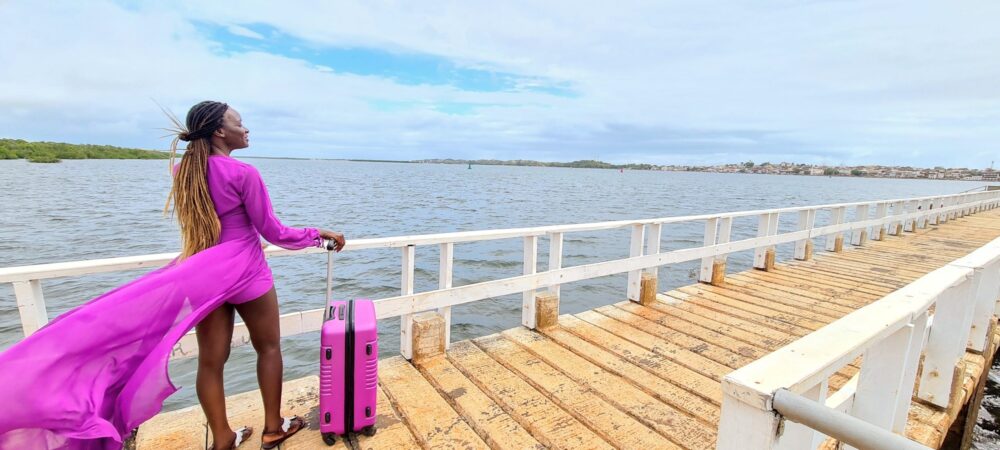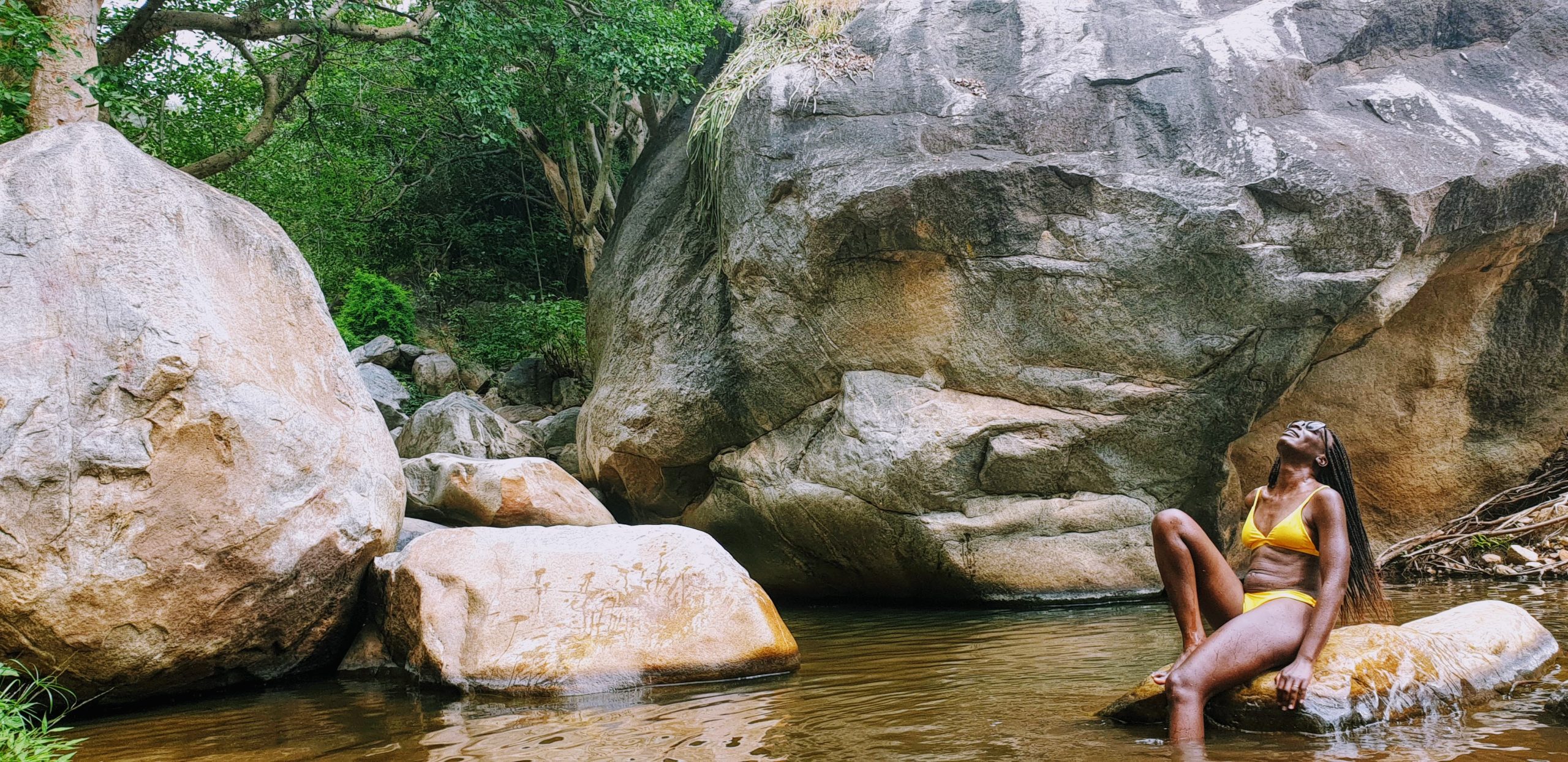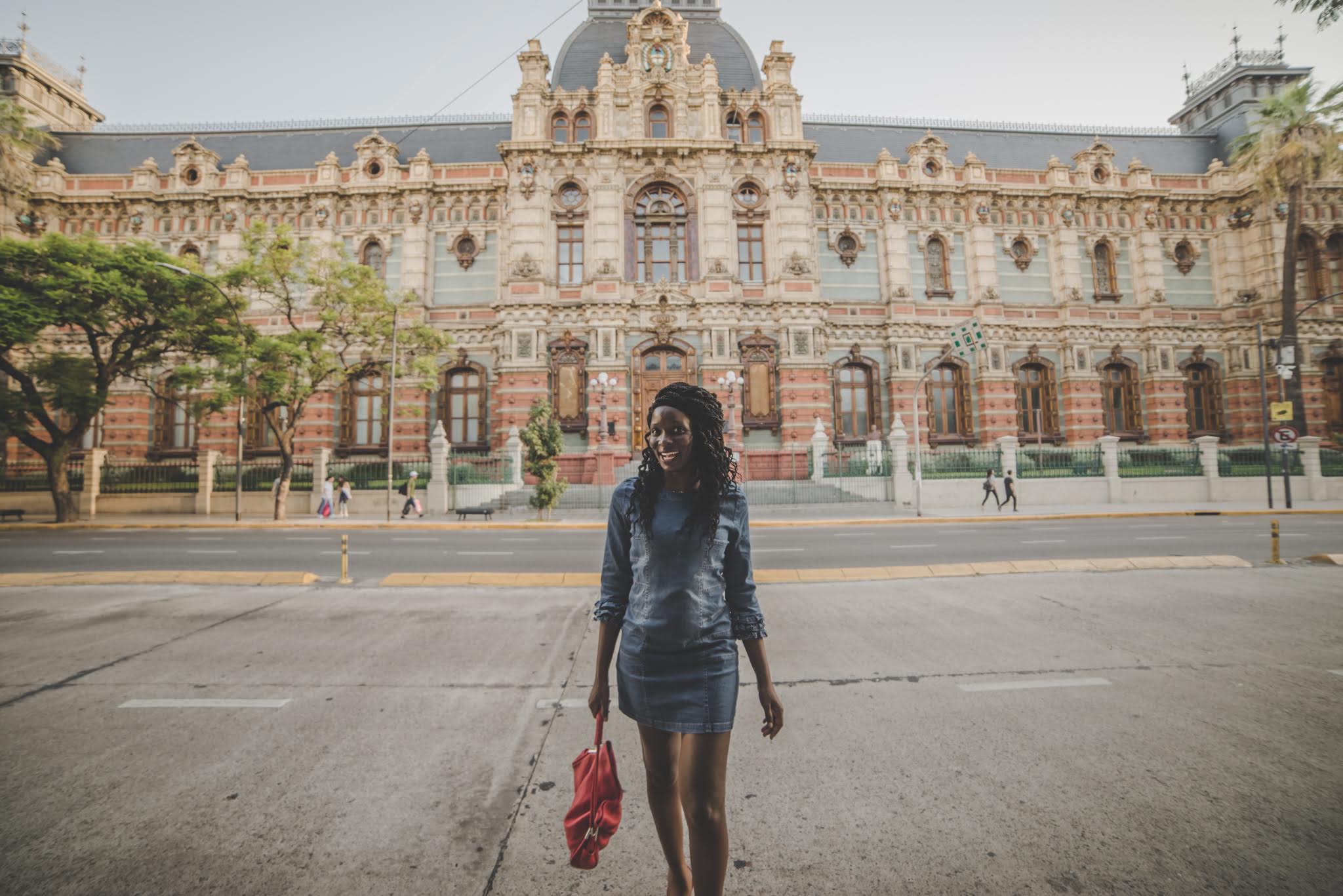Detached from the rest of the country, Kenya’s northern frontier clings to its heritage with intricate works of beauty, that is finally coming out due to increased accessibility.
On a recent 1,500+ KM 5 day 4 night Nairobi- Marsabit – Samburu – Turkana – Nairobi road trip, life felt so unaffected by the modern world that it was hard to believe the locals here have the same worries about Covid just like we do here south-side of Kenya.
Nowhere is more traditionally Kenyan than these counties.
The northerners live almost exactly the same way they always have for hundreds of years.

Most of them still live simple, sleepy, nomadic existences in their make-shift stilt huts and own huge herds of livestock.

Don’t expect to do too much, though you may be fortunate like I was to be invited to participate in celebrations which can last for days. I had the privilege of attending a wedding ceremony in Ngurnit village.
I however never caught site of the bride as she had just been circumcised that morning as is custom in this part of the world.
While the northern frontier is mostly hot, it is a great destination for outdoor lovers, and there’s actually a tonne of things to do.
The north of Kenya may not have heaving night life, but its village bars and hotels epitomize the region’s laid back lifestyle. As I was visiting during the Covid related restriction period, they didn’t stay open late so I took advantage and spent most nights watching shooting starts zip across the sky from both my traditional Gabra hut in Marsabit, and tent in Ngurnit.
You will find a few four and three-star hotels in the touristy parts of Marsabit, Samburu, and Turkana.
However, once you get off the beaten path, smaller guest houses and camps are more common, particularly in Kalacha and Ngurnit, where few tourists go.
Savoring the untapped desert and it’s secret beauty is only the tip of the iceberg in this adventure.
The northern frontier is home to Lake Turkana – the largest desert lake in the world and also the largest alkaline lake in the world.
Northern Kenya also has some of Kenya’s best natural water pools and swimming cascades.
With so much going for it, I still can’t wrap my head around why this part of Kenya rarely makes it in the country’s tourism narrative.
Northern Kenya’s lost-in-paradise vibe, coupled with its sundry attractions provide at least a month’s worth of notable options, making for a perfectly adventurous relaxing road trip getaway from the hustle and bustle that is Nairobi.
Not that I mind. With Maasai Mara, Naivasha, and the coast often overrun by tourists, there was something special about enjoying a nook very few people know about, and all accessible by road from Nairobi.
What's Covered in This Article
5 days and 4 nights Nairobi – Marsabit – Turkana – Samburu itinerary
Here’s how I spent the 5 days and 4 nights road trip from Nairobi to Marsabit, Turkana, and Samburu.
Day 1. Nairobi-Marsabit
4:30am Departure from Nairobi.
8:00 am Quick stopover at the Java in Nanyuki for breakfast.
We also stopped by at the equator in Nanyuki for a photo before departing for Isiolo whereby we stopped to refuel the car and for a quick lunch.
The driving distance between Nanyuki and Isiolo is 79.73 km and it took us about two hours to get there.
We then drove further north via Archer’s Post and Laisamis and stopped at the amazing Mount Ololokwe for sight-seeing.

Mount Ololokwe is often visited by the Samburu to pray for rain and ask God for healthy livestock. The name Olo Olokwe loosely translates to sacred mountain in English.
We arrived Marsabit at 4 pm in time for a game drive at Marsabit national park.
Marsabit County borders Ethiopia to the North, Wajir to the north east, Isiolo to the south East, Samburu to the south east and Turkana to the west.
The County has four (4) sub counties namely North Horr, Moyale, Saku and Laisamis. Covering an area of 70,961.2 km2 Marsabit is Kenya’s largest county.
Marsabit is composed of both desert and forested greener regions like Marsabit national park.
Marsabit National Park
Marsabit national park is a refuge for huge tusked bull elephants, diverse bird life and reptiles.
We weren’t fortunate to see any of the elephants except for their fresh dung.
We however saw several bird species, and buffaloes.
We drove through the park’s dense forest wreathed in mist and onto beautiful lake paradise tucked right inside the park to watch the sun set.


As we were exiting the park, we stopped by the once vibrant Marsabit Lodge which now lies in ruins where we got a hold of the buffaloes.
After sun set, we left the park for Nomads Trail Hotel where we had a very tasty dinner and spent the night in Marsabit.

Although Nomads Trail Hotel is a pretty basic hotel, it served our purpose for the night. I was assigned room #20 which is on the first floor and directly opposite the reception.
The showers were hot and had lots of pressure. Internet was free and pretty fast. And the bed was comfortable. The bathrooms would however have done with some thorough cleaning
Day 2: Kalacha – Chalbi Desert – Loyiangalani – Ngurnit/Samburu
After a hot breakfast at Nomads Trail Hotel we met up with our guide Adana and left Marsabit en route to Ngurnit in Samburu county via Kalacha, Chalbi Desert, and Loyiangalani.
Kalacha
After a scenic 4 hour long 132KM ride on a bumpy road, out first stop was at an oasis town called Kalacha.

Tucked amidst a permanent oasis in the heart of Chalbi desert, the doum palm-thrust village of Kalacha has a coastal vibe and is home to the Kenyan Gabbra community.
There isn’t too much to do here other than gaze at the herds of camels at the Afgaba waterhole or headed out to graze.


Chalbi Desert
Our second day took us to Chalbi, a desert of deep brown sand and blistering white salt perches.
We stopped by the salt-crusted cracked earth sand dunes in Chalbi Desert for more photo ops.


We then drove further north to North Horr downtown hotel where we had a sumptuous lunch of rice, chapati, and goat meat stew.
At about 5:30 pm, we left for the nearby Chalbi desert sand dunes.
We played in the dunes before watching the magical desert sun set.



Having ensured that the sun had gone down to its resting place, we called it a day.

We spent the night in traditional Gabbra huts at North Horr Downtown camp. The huts were pretty basic, had electricity and one charging socket per hut.
Both the showers and latrine were outside.
The camp didn’t have internet.
Only Safaricom network is accessible in this area.
Day 3: Loyiangalani
Next day in the morning after a hot breakfast of pancakes and goat meat stew left overs from the night before, we were ready for the 3 hour drive to Loiyangalani and get a feel of Lake Turkana aka “The Jade Sea”, the world’s largest desert lake.
The lake runs 241 KM up to its main source, the Omo river on the Ethiopian side of the border.
The route is very scenic.
Make sure to stop by this escarpment (can’t remember the name) for a photo op.

El Molo Bay
But first, we made a detour at El Molo Bay, to visit Kenya’s smallest community.
To get to the village, you will need to take a boat which sets you back KES 500 and an additional KES 200 community fee.

Other activities you can engage in here include fishing and sun bathing.


Numerous bird species patrolling a shore are also a common site at the lake.

Moving further west towards where the toilets are located, we also sighted some flamingos balancing under the towering African sky.
If you’re lucky like I was, you will find crocodiles sunbathing at the shore of the lake.
After the visit to El Molo Bay, we stopped by Palm Shade Resort, Loiyangalani for a sumptuous lunch of fish, vegetables, and ugali.
I got a chance to tour the hotel and I would highly recommend it.
Palm Shade Resort will set you back only KES 3,000 on full board basis.
After our lunch, we then drove further to Ngurnit which for about 4 hours on a rough road.
The drive is very scenic and takes you along Lake Turkana as you depart Loyiangalani.
As you move further along, the landscape is graced by the Ndoto mountains afar.
Lake Turkana Wind Power

On the way, we also stopped by Lake Turkana wind power station, Loyiangalani substation for an opportunity to admire this infrastructural marvel that is also the largest wind energy station in Africa.
The Sh70 Billion wind farm sits on 40,000 acres of communal land and is the largest private investment in Kenya’s history comprising of 365 wind turbines, each with a capacity of 850kW.
The 400kV Loiyangalani Suswa Transmission Line is 438Km long, and evacuates 310MW of power from Lake Turkana Wind Power to Suswa substation in Kajiado County. It traverses six counties that include Marsabit, Samburu, Laikipia, Nyandarua, Nakuru, Narok and Kajiado.

Ngurnit
We arrived Ngurnit late at night, had dinner and called it a night.
We spent the next two nights at Lamasu camp, a locally owned community camps.
The camp is very basic and is composed of both tented accommodation, bandas, regular brick and mortar building, as well as one open air rooftop room.
Both the showers and latrines are outdoors.
The camp uses solar power from a GIZ project.
Day 4. Ngurunit
Woke up the next morning, had a breakfast of tea, bread, eggs, and pancake.
At about 8 am, left the camp for a 10 hour hike up Mount Leplii – one of the Ndoto mountain ranges.



Upon arrival at the foot of the mountain, one is met by the first set of Darawai pools.
As you hike uphill, there are two more sets of pools.
I took dips in the pools to cool off on the way up.


After the hike, I went back to the pool at the bottom for some much needed swim. It was also an opportunity to interact with the locals.
My most memorable moment was sliding down the rocks duf mpararo… paradise 🙂
Ask the local boys to show you how to go about this.
Day 5. Ngurunit-Nairobi
Everything with a beginning, must have an end.
After breakfast we bid the beautiful village of Ngurnit goodbye and departed for Nairobi via the Leisamis route about 70KM from Ngurnit.
I was back in Nairobi by 6PM.
Verdict:
If I was to re-do this trip, I’d start from Ngurnit and work backwards.
To get to Ngurnit from Nairobi, branch off at Laisamis at the sign post written Loinyangalani substation. This junction is the next one after the one to Wamba and Maralal.
If self-driving, ask your local guide to meet you here.

Important Contacts
Should you choose to self drive, below are some important contacts to have:
Local Desert Tour Guide, Adano – 0768 700 530
Lasamu Camp Ngurnit, Steve – 0706 385 905
Alternatively, consider joining one of the many groups offering group trips to North Eastern.
Below are some commendable ones:
- Village girl travels, Shiku, 0754 128 866
- Team Hiking Kenya Safaris, Peter, 0729 662 277
- Virgin Explorers, Clement, 0789 492 156




That was a very good write up Eva. I have enjoyed the well elaborated virtual travel!
Well written and the places are well captured.. I could almost mentally go through the journey with you.
Kenya’s North is expansive, for example I could feel you did not do justice at Lake Turkana, there is much more to see and Experience at the Jade Sea.. For example, Dr. Richard Leakey did a lot of work in the Sibiloi National Park where he discovered homo habilis, but 12KM removed from Loiyangalani town center is the Desert Museum (Koobi Fora) – to be found here are extinct fossils like the crocodile, giraffe and tortoise which are four times larger than the current respective species. This could have added a paleontological feel/theme to your Loiyangalani visit.. away from the Emolo bay are beaches where you can find locals swimming upto 300 M further from the shore and can always feel safe to take a dip even 3 to 10 Meters away from the shoreline
Ngurunit is magical, nothing short.. for a short (and by short, 3 to 4 days are considered so in the North) tour however, I would donate one day for Loiyangalani. To hike Ndoto mountains, a tour operator should do a backpackers theme to hike, Ndoto Mountains, Nyiro Mountains in South Horr.. and the UNESCO protected biopsphere that is Mount Kulal – the canyons, gorges, bends, springs and caves are out of this world, which makes Hell’s gate in naivasha seem like a castle in the sand child play.
Attending the wedding at Ngurunit was also excellent. The cultural rites of the communities here also make for Cultural Safari, with a guide who understands every step of the ceremony(s) it can be a beautiful experience. The Samburu, in Ngurunit might noth be Samburu at all, there is the Arielle Rendille who are Rendille that adopted the Samburu culture and language. though they have intermarried, its hard to tell them apart.
Another important ceremony by the Samburu/Rendille is the Sorio ceremony, which is an equivalent of Jews passover, happens once a year.. amazing how such cultural practices came to be precolonial before christianity was introduced.. and how this stacks up to africa culture and roots.
Thank you so much for the elaborate addition. I will definitely consider this on my next visit.
Incredible Adventure it is, thanks for Sharing😎👌
You’re welcome. Indeed it was quite an adventure. Thank you for reading.
Amazing ❤️
So informative
Thank you. I’m glad to hear that you found the post informative.